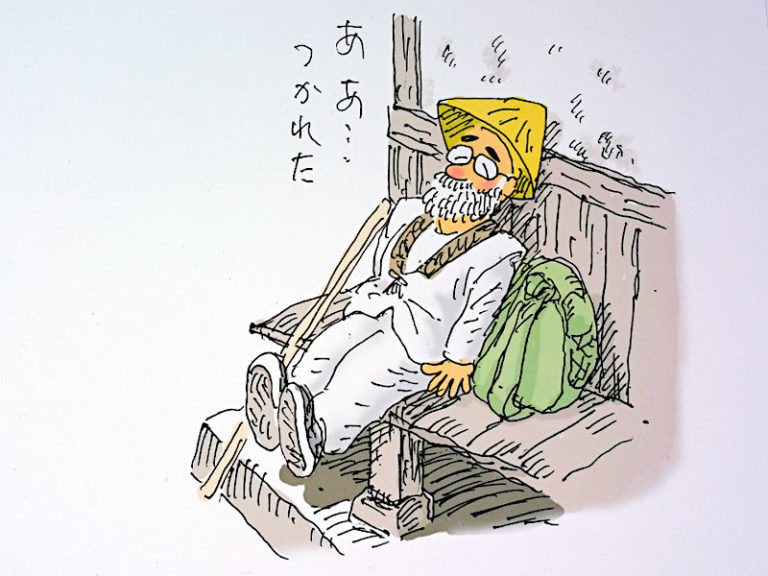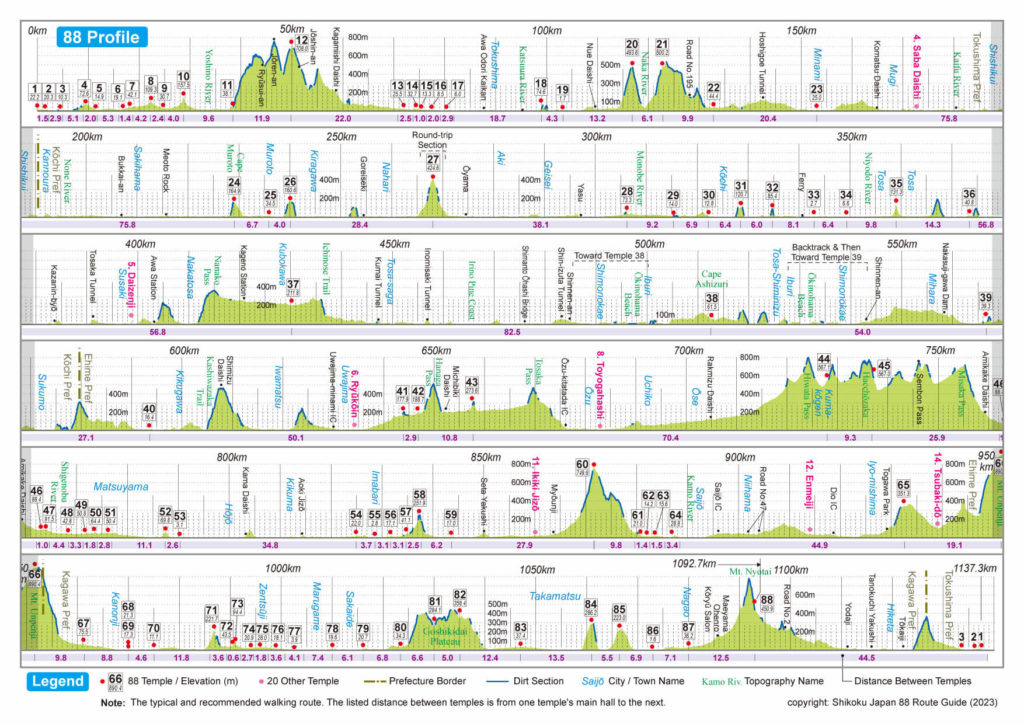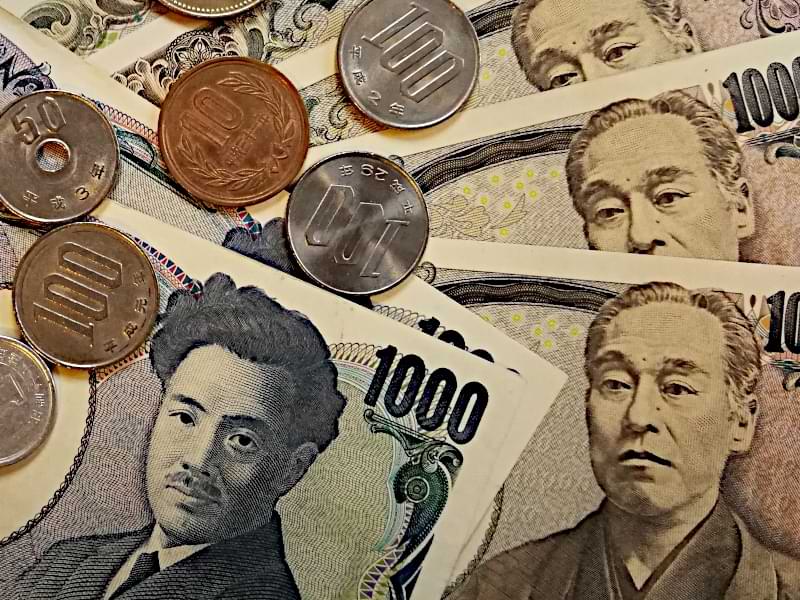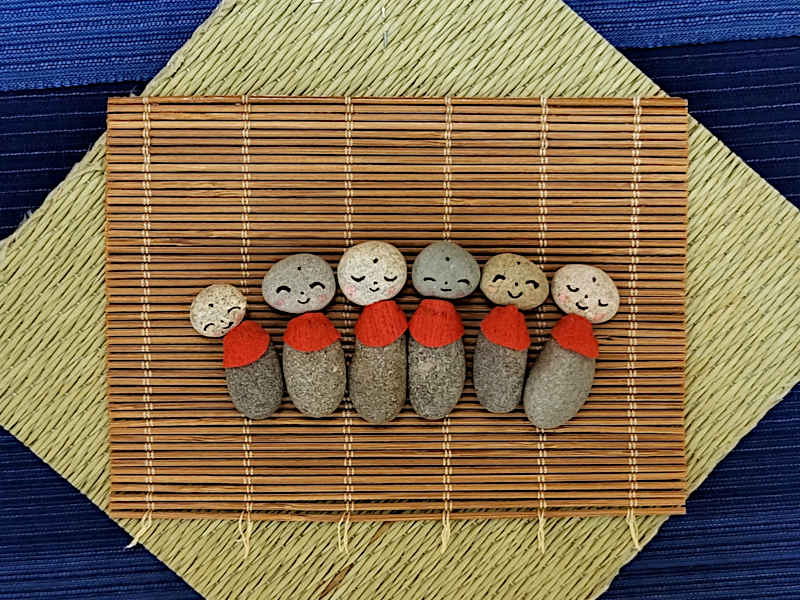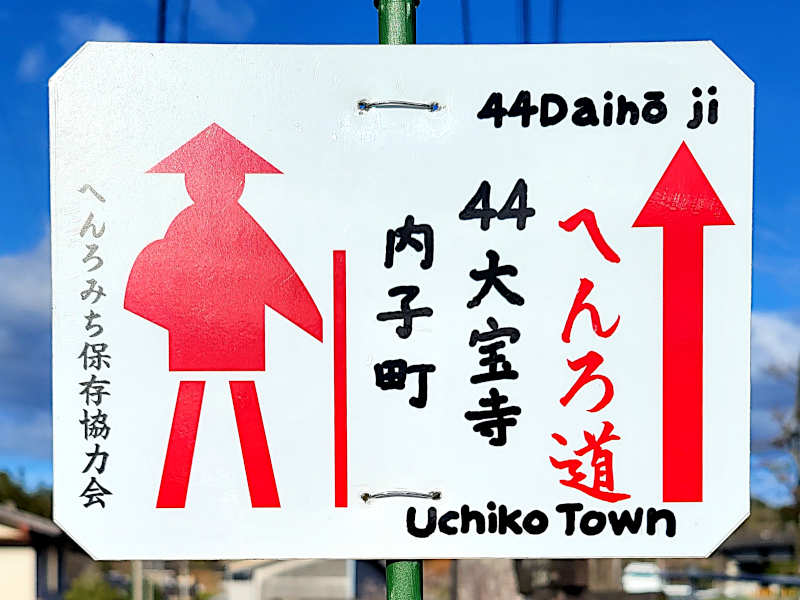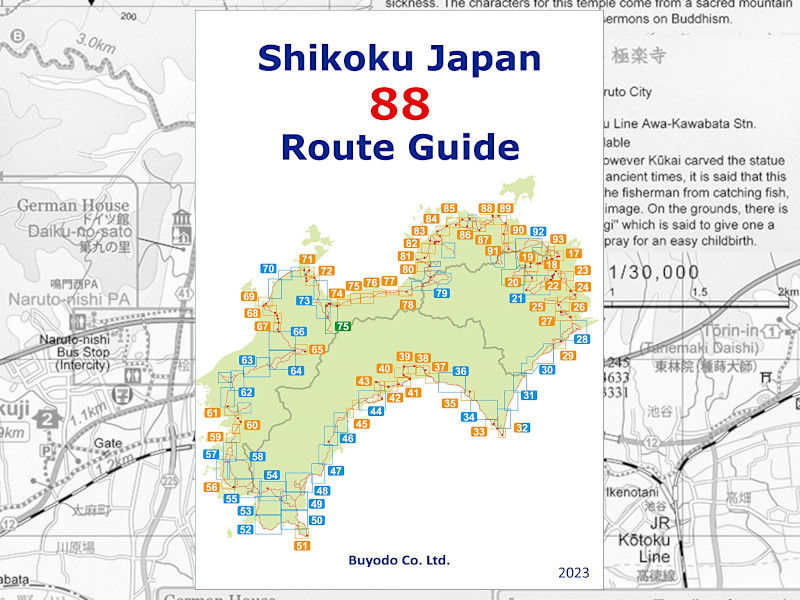The entire route from Temple 1 Ryōzenji (霊山寺) to Temple 88 Ōkuboji (大窪寺) and back to the starting point, to Temple 1 has a length of 1,150 km. There are 10,000 meters of altitude to climb on this route.
If you walk the entire pilgrimage, you will be on the road for about 42 days. You will cover 30 km a day and walk for 6 to 8 hours. And carry a backpack weighing several kilograms on your back.
Besides the enormous distance, the Shikoku pilgrimage has other challenges.
henro korogashi
The path to Temple 12 Shōzanji (焼山寺)
This henro korogashi leads from Temple 11 Fujiidera (藤井寺) to Temple 12 Shōzanji. From a sea level of 38 metres to a sea level of 706 metres. There are two more descents and counter ascents between temples 11 and 12. A total of 1,000 metres of altitude have to be climbed that day. In the route guide, the walking time from temple 11 to 12 is given as 4 to 6 hours. There is no overnight accommodation between temples 11 and 12.
Shōzanji is at route km 50. All those who start their hike at temple 1 will walk this henro korogashi on the second or third day of their pilgrimage.
For trained walkers
The path from Temple 11 to Temple 12 is one of the highlights of the pilgrimage hike. A path interspersed with stones and roots.
In the German Alps, the trails are divided into three levels of difficulty for the orientation of mountain walkers. Easy, moderate and difficult. The henro korogashi to Temple 12 would be a moderately difficult mountain hike according to this classification. By the way, this is also true for all other henro korogashi, none of them is a difficult mountain hike, according to the Alpine classification. Always around easy to moderately difficult hikes.
For untrained walkers
The path to Temple 12 is a challenge. Especially because this trail has to be done at the beginning of the pilgrimage.
If you have the opportunity at home, you should try a route with 1,000 altitude meters in one day. If possible with the shoes and backpack planned for Shikoku.
If you have great difficulty with such a trial hike, you can bypass the henro-korogashi to Temple 12.
By using public transportation, taking a bus to Temple 12 and continuing the hike there. If you still have time at the end of your pilgrimage, you can then walk the path from Temple 11 to Temple 12. It will be much easier for you than when you started the walk.
Another option is not to start the pilgrimage at Temple 1, but at a temple followed by many flatter stages. A good place to start is Kochi. A wonderful first temple for a pilgrimage is temple 31. The way to temple 12 then comes towards the end of the pilgrimage, when the muscles are already trained. The henro korogashi to temple 12 is then much easier to manage.
henro korogashi to temple 12 - my recommendation
Train before leaving for Shikoku and enjoy the way to temple 12. It is a wonderful route.
If you don’t have time or opportunity to train at home and you don’t feel fit enough for this route, don’t put the trail at the beginning of your walk.
henro korogashi - in general
The two stages with the most altitude difference are Temple 12 and Temple 66.
The two stages with the most altitude difference are Temple 12 and Temple 66.
A mountain railway leads to the highest temple, 66 Unpenji (912 metres). Some of the pilgrims who normally walk also use this mountain railway. Some only for the descent, which is particularly hard for the knees.
Be careful on all henro korogashi routes: in rain or after rain, the path can be slippery and slippery.
Nature trails?
Unfortunately, there are only a few nature trails on the pilgrimage route today. The route is 85% on paved roads and only 15% on nature trails.
As a result, most of the route runs on very hard surfaces.
To master this challenge, you should train on paved roads in advance. Ideally, you should not only walk/hike for one hour a day, but also for several hours at a time.
Training - my recommendation
The more you train before starting your pilgrimage, the more you will enjoy the pilgrimage from the beginning. You will have less difficulties with blisters, muscular problems, etc.
The more accustomed you are to walking downhill and uphill, the easier it will be for you to walk on Shikoku.
If you don’t have time or opportunity to train at home, move the training to Shikoku. Use the first few days of your pilgrimage to slowly acclimate to the effort. Walk shorter distances of 10 to 15 daily kilometers on the first days and increase slowly.
In my experience, it is more important to be able to assess your own fitness level than to start the pilgrimage particularly well trained. Adapt the stages to your current personal condition, to the weather conditions and temperatures. To be able to make this assessment and to observe it is more important than the physical training before the hike.
